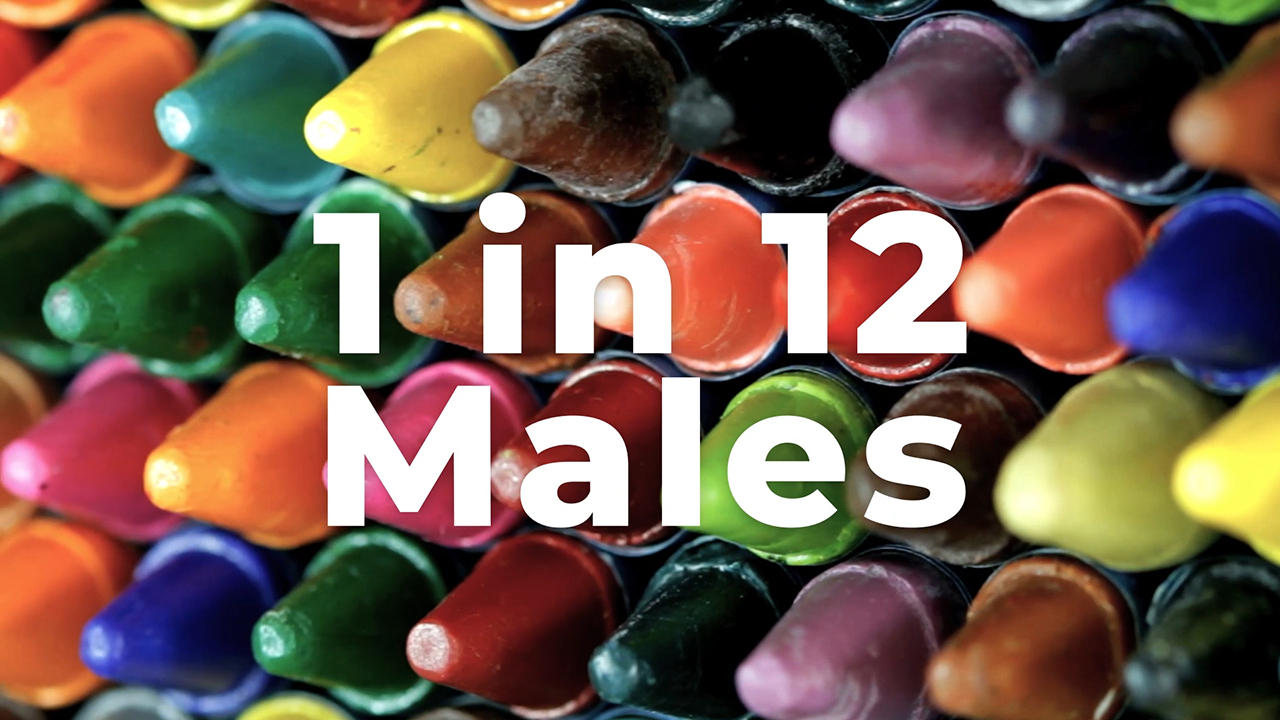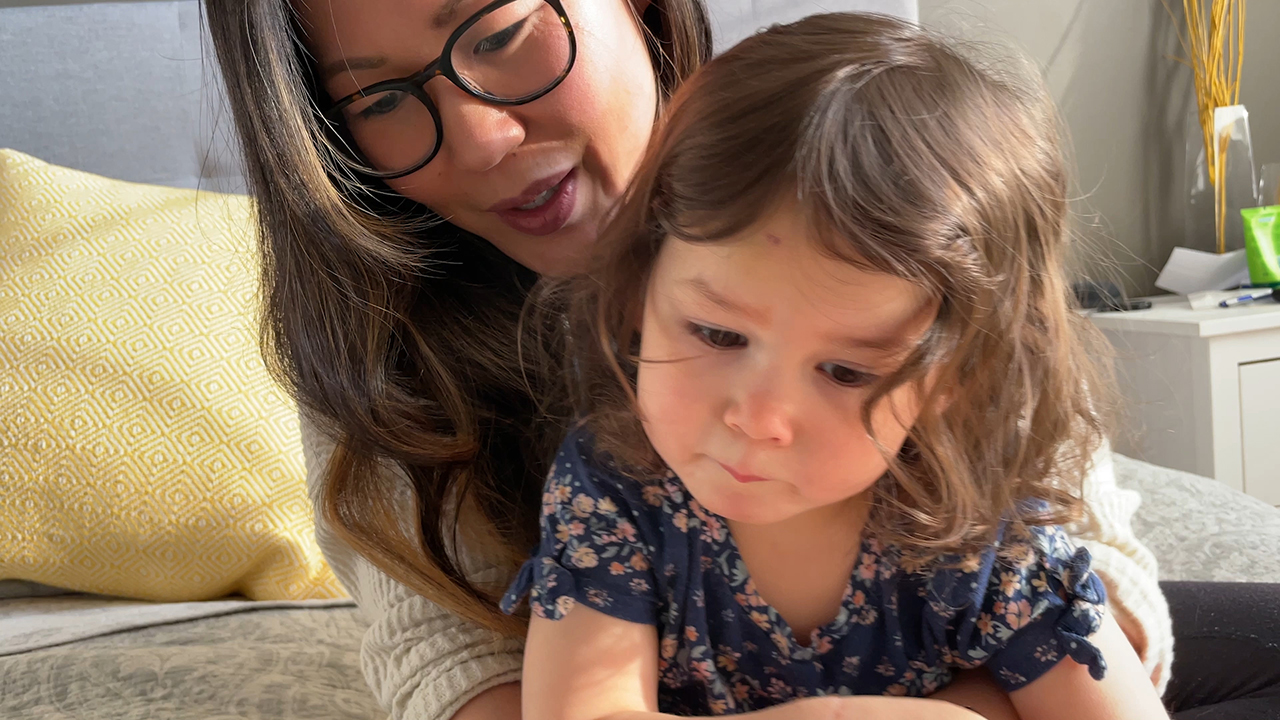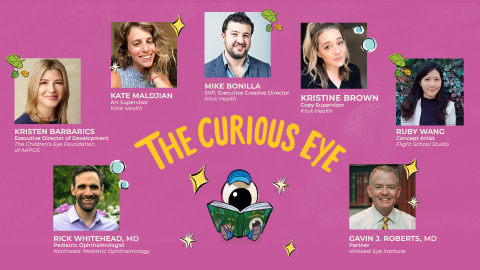SAN FRANCISCO--(BUSINESS WIRE)--The Children’s Eye Foundation of AAPOS today unveiled the world’s first interactive children’s book to help screen for color vision deficiency (CVD), commonly known as color blindness. The foundation has posted a free digital version of THE CURIOUS EYE at thecuriouseye.org and published a first-run, hardcover book for its member pediatric ophthalmologists.
The unique book meets a significant unmet societal need, as neither schools nor most physicians’ offices screen for CVD, and children generally don't even know they have it. Largely genetic, the condition typically goes undiagnosed in children, despite it affecting 1 in 12 males and 1 in 200 females, globally.
CVD makes it difficult to distinguish between colors like reds and greens, and yellows and blues. It can lead to being misdiagnosed with other learning disabilities, being bullied, withdrawing from activities and games that revolve around color, and generally isolating from peers. According to the National Science Teaching Association, at least one student in a class of 25 is likely to have difficulty distinguishing between colors.
Dr. Rick Whitehead, a pediatric ophthalmologist at Spokane, Washington-based Northwest Pediatric Ophthalmology said, “Sometimes teachers or parents will attribute color vision issues to laziness or attention-seeking behavior, such as coloring the grass red instead of green, when they’re simply just coloring the world the way they see it.”
“The most common challenge with the Ishihara test in children is availability,” said Dr. Gavin J. Roberts, a partner at the Midwest Eye Institute and Clinical Assistant Professor of Ophthalmology at the Indiana University School of Medicine. “It’s not in widespread use, except in the offices of specialized doctors, and sometimes testing can be limited by a child’s attention span.”
Dr. Roberts, who has partial red-green vision deficiency and wasn’t diagnosed until he was in medical school, added, “I think this book will have an impact as a diagnostic tool that’s easily approachable in doctors’ offices and as a screening device outside of doctors’ offices.”
Making colorblind screening more accessible and engaging
“We are thrilled to have created THE CURIOUS EYE,” said Kristen Barbarics, Executive Director of Development at the foundation. “It is a playful yet practical screening tool to help parents, educators, and eyecare professionals identify children who may have color vision deficiency early. We’re hopeful that it also reminds everyone that we all see differently and that’s okay. As the book concludes, ‘And never forget the one thing that’s true. How you see is special to you.’”
Written in rhyme for young children (first grade reading level), the 24-page storybook takes a page from the standardized Ishihara test format for CVD. Developed over 100 years ago, the clinical test features a series of multicolored dots in the shape of numbers, which someone with CVD will have difficulty seeing. Early diagnosis is crucial – as color is an important learning and development tool during a child’s formative years – and THE CURIOUS EYE turns the screening process into a fun and engaging adventure.
As readers journey across the leafy treetops of a jungle, comb through starfish on a beach, and explore the bottom of the ocean, they are asked to point out all the creatures they see. Each double-page spread includes many creatures, one of which people with red-green CVD (95 percent of CVD instances) will find difficult to detect because they have trouble telling the difference between reds, oranges, and greens.
The book also features a handy answer key at the end of the story to help parents and educators – even those who may be affected by CVD – determine if they should contact an eye-care professional for diagnosis.
Color vision deficiency: More common than people realize
THE CURIOUS EYE concept was developed by Klick Health, the world’s largest independent health marketing agency. In 2020, creative team members Mike Bonilla, Kristine Brown, and Kate Maldjian learned how prevalent CVD is, in contrast to its low rate of diagnosis in children. They wrote and designed THE CURIOUS EYE after being astounded by copious stories on social media from people with CVD like: “My teacher tried to send me off to a special school because I colored my cat green” and “A therapist told my parents I was troubled when I colored a snowman the wrong color. It wasn’t until years later that I learned it was because I was color blind.”
“We wanted to help put an end to these types of stories, so we looked to children’s love of picture books and games to creatively evolve how color vision deficiency is screened,” said Bonilla, an Executive Creative Director at Klick. “We are proud to be working with the Children’s Eye Foundation of AAPOS and are confident that THE CURIOUS EYE will make a difference in many children’s lives.”
To help bring their vision to life, Klick collaborated with illustrator Ruby Wang and the award-winning team at Flight School Studio, known for creating virtual reality games, location-based entertainment, films, and mixed reality projects. Studio cofounder Brandon Oldenburg won an Academy Award for Best Animated Short (“The Fantastic Flying Books of Mr. Morris Lessmore”).
“I’m really excited for the opportunity to use this new storybook, especially in finding kids who were previously undiagnosed with color vision deficiency,” added Dr. Whitehead. “There’s a benefit for everybody who reads the book in understanding that other people may see the world a little bit differently than they do, and I think that will be helpful to everyone.”
Parents, educators, and other caregivers can download the e-version of THE CURIOUS EYE and access more information on CVD by visiting thecuriouseye.org. They can also use the site’s ophthalmologist locator to find the pediatric ophthalmologist nearest them.
About the Children’s Eye Foundation of AAPOS
The Children’s Eye Foundation is the official foundation of the American Association for Pediatric Ophthalmology and Strabismus. Its mission is to end preventable vision loss in children. To mark its 50th anniversary in 2020, the foundation launched All Children See in partnership with the Knights Templar Eye Foundation, who generously funded the program. All Children See was created to provide a critically needed pathway to quality eye exams for all children (18 and under), regardless of their socioeconomic circumstances. The public service program pairs children needing a comprehensive eye exam with nearby, highly qualified pediatric ophthalmologists at no cost for children who do not have health insurance or cannot access care for other financial reasons. For more information, visit childrenseyefoundation.org. Follow the Children’s Eye Foundation of AAPOS on Facebook, Instagram, and Twitter.









